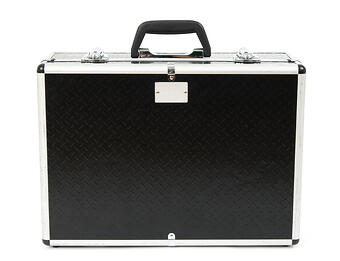 While there are many ways to approach building a sales meeting kit, here is one approach that will help you deliver a quality sales meeting every time. Follow this process and build your B2B sales training resources:
While there are many ways to approach building a sales meeting kit, here is one approach that will help you deliver a quality sales meeting every time. Follow this process and build your B2B sales training resources:
Begin with the end in mind.
Before building the sales meeting, think through what it is that you want salespeople to learn and what you hope they will be better at once the meeting is over. Start by completing this statement:
When salespeople leave this meeting, they should be better at (fill in the blank) and I’ll know they are better because they will do (fill in the blank) more consistently.
Decide if there should be an advance assignment before the workshop.
In some cases it might make sense to have an advance assignment as it could enhance what is to be taught during the sales meeting. For example, if you are going to run a meeting where you want salespeople to set more quality appointments—with new customers—you could ask salespeople to bring a list of 20 potential new customers to the workshop.
Build a training meeting where participants will be involved.
People learn more when they aren’t just sitting there listening to someone talk. Look for ways to create a rhythm where you are presenting something, then asking them to do something and then getting their reaction or feedback. It could be a game, some brainstorming, or perhaps small group
work before presenting to a larger group. In every case, take some time to think about the best way to get participants involved.
Run the sales meeting.
-
Start the meeting by letting everyone know what they should expect to learn during the meeting (this goes back to step one above).
-
Run the meeting, using the process you designed in step three above.
-
At the end of the meeting be sure to recap what they should have learned and make an assignment to use what they learned with at least one account.
-
Always have a built in system that will allow for follow-up. Sales training with quality follow-up and follow through is the best way to insure a great return on the time invested in the meeting. Follow-up could be in a future meeting, in a one-on-one meeting with a sales manager or a contest. For example: if the workshop is about setting appointments, the follow-up contest should be tied to the number of appointments set by each seller. The seller with the most appointments wins a prize!
If you don’t have the energy or time to develop your own workshop another option is to become a partner and use training workshops developed by other B2B sales consulting firms. Here’s a list of some kits from The Center for Sales Strategy’s Partner Program that will expand your sales training resources:
-
Setting Quality Appointments
-
Using Better Valid Business Reasons
-
Sharpening Your Phone Approach
-
Write Effective Letters of Introduction
-
Designing a Personal Marketing Resume
-
Avoid Missing Needs Analysis Topics
-
Conducting a Needs Analysis
To find out more about these resources, set up a Toolkit Tour with a Partner Program consultant.


